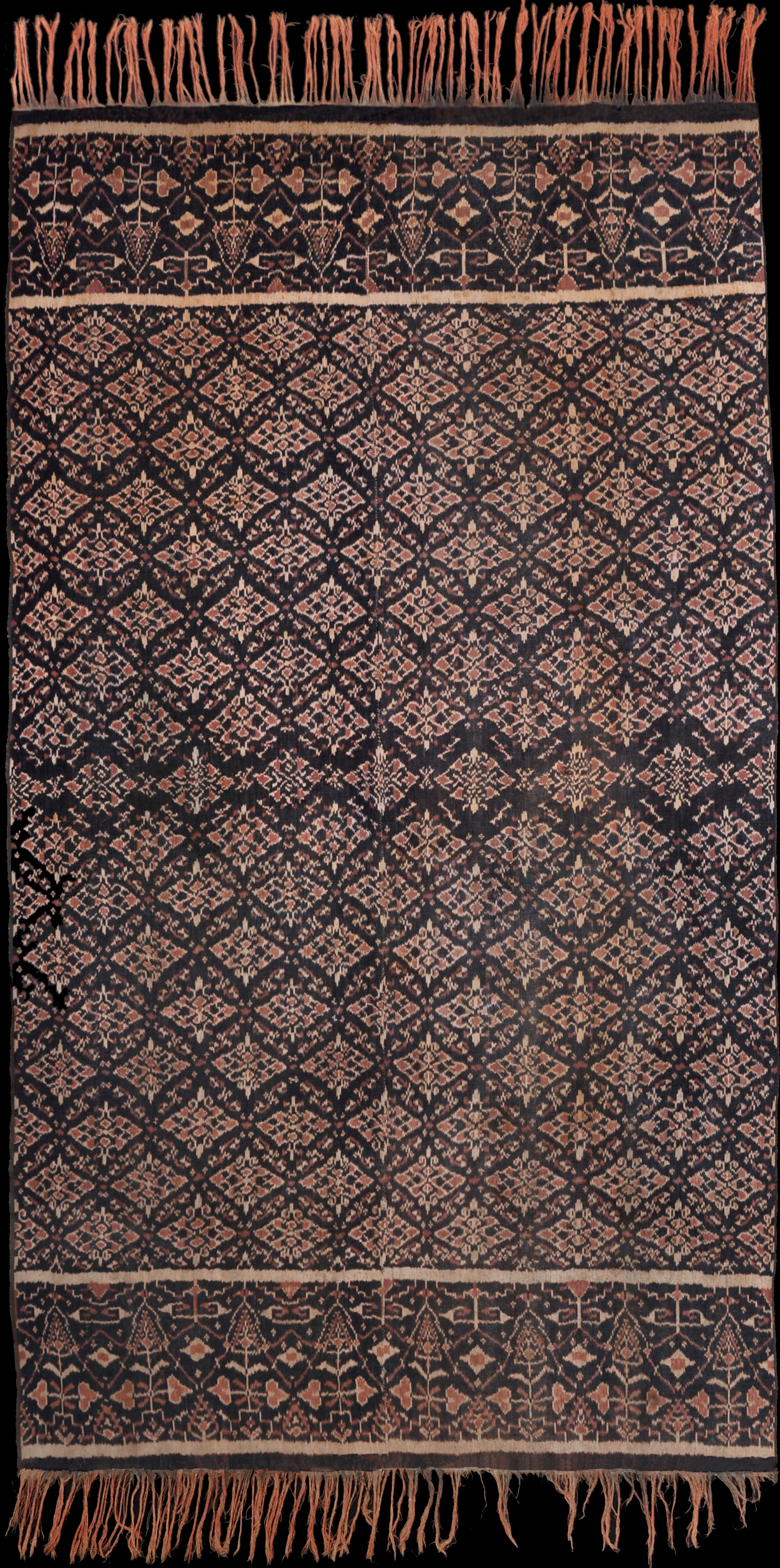| |
 mouse over to magnify mouse over to magnify
| | | | 246 Flores Group, Ende
Semba (man's shawl)
| | Locale: | | | Period: | 1910-1930 | | Panels: | 2 | | Design: | Patola-inspired array of floral lozenges covering the entire field. End borders with very elaborate tumpal emulations. While the first impression is of a cloth done in two tones, morinda red and a near black maroon created by overdying indigo with morinda, closer inspection reveals the use of yellow for accents - most lavishly in the borders with patola-inspired tumpals, a band of interlocking triangles. Yellow is very rarely seen in Ende semba. In the Lesser Sundas in general except Timor it is reserved for the highest levels of society. | | Size: | 134 x 252 cm (52.7 x 99.2 in) | | Weight: | 910 g (269 g/m2) | | Yarn: | Cotton, hand-spun, fine | | Comment: | Exceptionally well designed and executed large shawl for gentleman of the nobility. Patterning, level of intricacy and quality of the ikat work are at a level without published equal. The red, as may be expected, has faded somewhat, but has sufficient tonal strength to contrast with the ecru and black. Yellow dyes, while favoured by royalty, are notorious for not being colourfast, but under the microscope the colour here (probably produced by kunjit, turmeric) is still surprisingly vibrant. Two spots of darning no larger than a finger tip, fringes fully intact. The overall impression is that of a very well preserved antique. | | Background: | Additional information in chapters on Flores Group and Ende. | | Published: | Ikat Textiles of the Indonesian Archipelago, 2018.
| | Compare: | 161 199 238 239 | | Sources: | Near identical to semba in Boston Museum of Fine Arts, Acc. Nr. 27.470 that was acquired in 1927. Very similar to circa 1930 semba in Krefeld, depicted in Völger and Von Welck, Indonesian Textiles. the appendix by Khan-Majlis, Fig. 144, but with more intricate patterning. | | |
 ©Peter ten Hoopen, 2025
All rights reserved.
|
|


